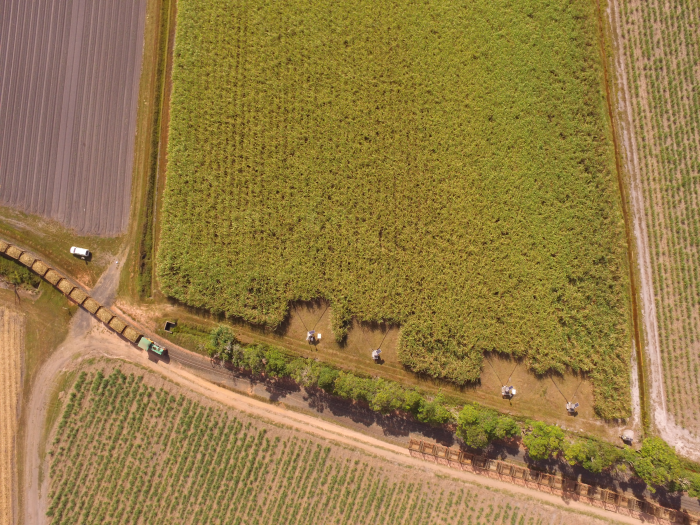



シルクウッド サトウキビ水質モニタリング サイトは、2014 年に「パドックからリーフまでの統合モニタリング、モデリング、報告プログラム」( reefplan.qld.gov.au ) の一環として設置されました。シルクウッド サイトは、グレート バリア リーフ集水域内の水生および海洋生態系の水質に寄与するサトウキビ作物土壌システムからの栄養素損失をモニタリングするために開発されました。このサイトはクイーンズランド州北部の湿潤熱帯地域に位置し、天然資源鉱山省によってモニタリングされています。農業慣行は MSF Sugar によって管理されています。
このプログラムはオーストラリア政府とクイーンズランド州政府が共同で資金提供しており、政府、業界団体、地域の天然資源管理団体、土地所有者、研究機関が協力して実施しています。プロジェクトの目的は次のとおりです。
- 施肥量や施肥形態を変えながら、サトウキビ作物土壌システムにおけるさまざまな経路で失われる窒素の量を決定する
- さまざまな窒素施用量と形態の試験を実施し、作物の生産と品質への影響を評価する
- 施用量と形態による窒素損失の違いを評価する
- 湿潤熱帯地域の農業生産システムからの窒素損失経路に関する現在の理解を深め、重要な損失メカニズムを特定する
このサイトには、4 種類の窒素施用処理からの流出水と深部排水を測定するために設計された 4 つの監視ステーションが設置されています。各ステーションには、9 インチのパーシャル水路とゴム製のウィング壁が取り付けられています。これらのステーションには、CR800 データロガー、自動冷蔵水サンプラー、圧力トランスデューサー、テレメトリ、および電力機器が装備されており、流量を測定および記録し、流出水サンプルを収集します。このサイトには、降雨量と強度を記録する転倒式バケツ式雨量計 (雨量計) 2 台と、作物の根域下の水と栄養素の深部排水を測定および収集する地下ライシメーター システムも設置されています。
圧力トランスデューサーから収集されたデータは、表面流出としてシステムから失われた水の量を計算するために使用されます。これらの量は、自動サンプラーによって収集された栄養分濃度と組み合わされ、各作物サイクルを通じて各処理から単位面積あたりの窒素の総損失を算出します。
Campbell Scientificの機器で収集された測定値は、他のいくつかの要素と組み合わされて、シルクウッド試験地のサトウキビ作物土壌システムの総合的な栄養予算を作成します。このサイトの開設以来、3 つの作物サイクル全体にわたって栄養損失の正確な測定値が記録され、生成された情報は、より大規模なパドック ツー リーフ プログラム (技術レポート 2014-16) に貢献しました。このサイトは引き続き運用されており、データ プールを増やし、システムからの将来の窒素損失のモデル化を可能にしています。
ケーススタディの概要
アプリケーション
グレートバリアリーフ集水域内の水生および海洋生態系の水質に寄与するサトウキビ作物土壌システムからの栄養損失を監視場所
シルクウッド、クイーンズランド州、オーストラリア使用製品
CR800 RF412 CS451寄稿者
Australia Department of Natural Resources and Mines参加団体
オーストラリア天然資源鉱山省、MSF Sugar計測項目
水質関連ウェブサイト
Reef 2050 Water Quality Improvement Plan Coasts, Waterways and MarinePDFで見る